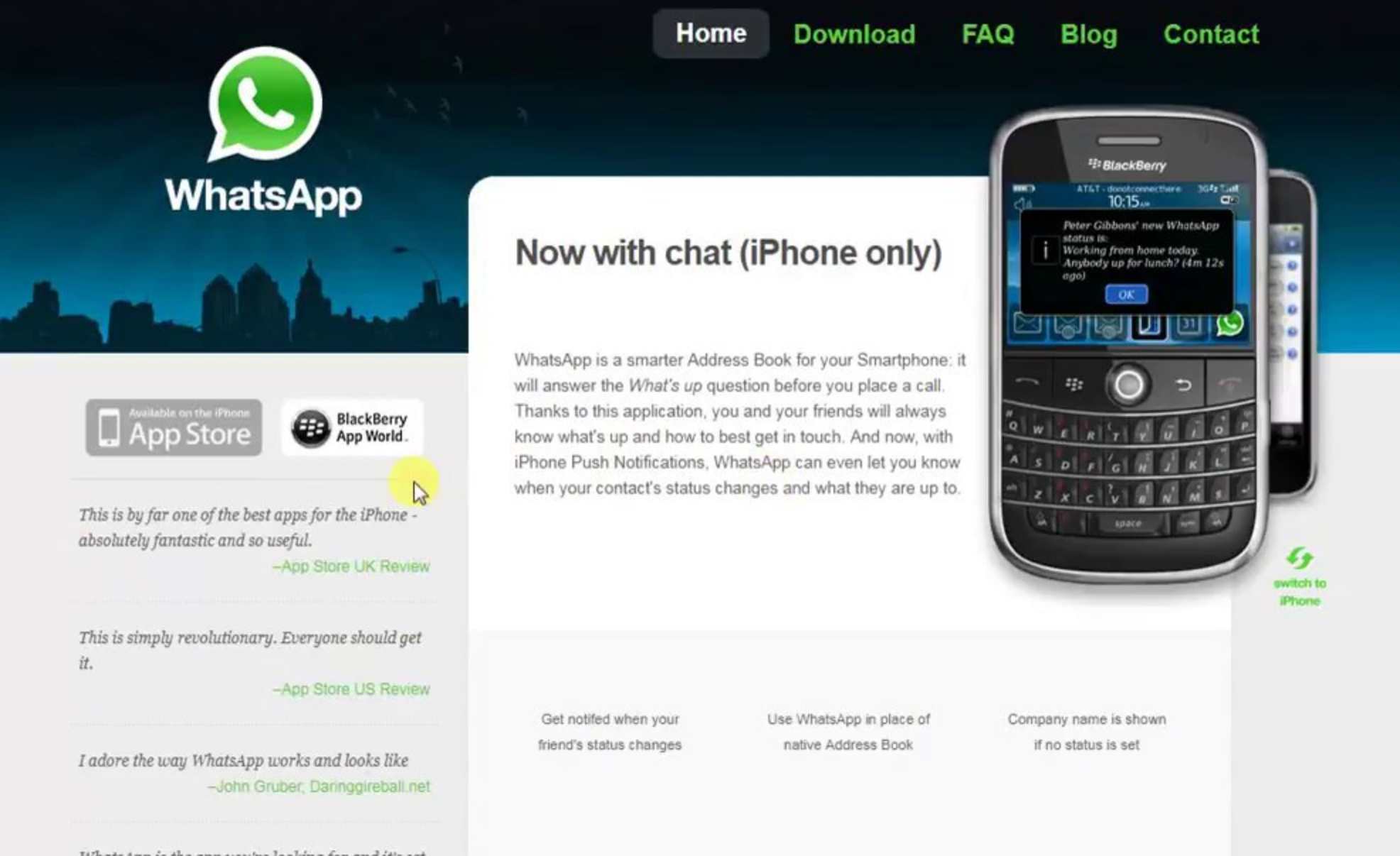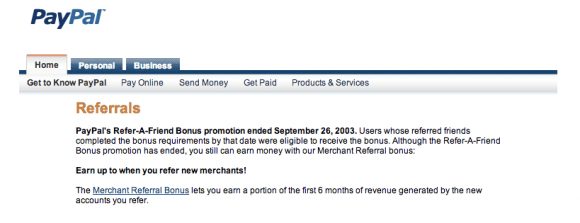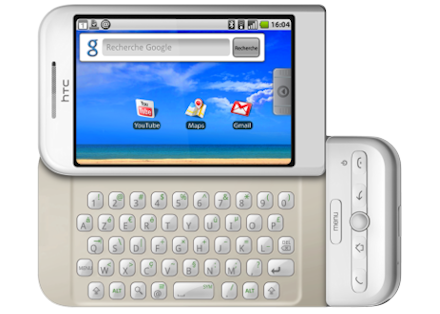It has been fascinating to watch technology companies go from startups to behemoths in a short period of time. While the glory days of Intel or Microsoft are well before my time, I have been around for the rise of mobile and internet companies. Part of watching these companies grow over the years is watching public perception change over time. For instance, companies like Facebook and Google were viewed as darlings of the tech world just a decade ago but today face backlash today over privacy concerns and aggressive business practices.
I want to recall the "origin stories" of a few consumer technology companies in their early days - specifically around their early users. Taking a look at how these users were acquired by those companies and in some cases forgotten over the years.
Everyone knows Amazon started with books and eBay focused first on collectables but there are a few that may surprise you.

Starting small
In the product adoption curve, "early adopters" and "early majority" form the basis on which tech companies are able to experience exponential growth. "Crossing the Chasm" was coined in the 1991 book by Geoffrey A Moore and identified the "chasm" as a rift between the enthusiast and pragmatist users of a product - which can have very different expectations. There are also some great lessons to gather here about how to successfully cross the chasm including product positioning, marketing, distribution, pricing etc.
"Counter-intuitively, the best way to get big in the future is to start small now in the area where you can dominate the most quickly. Look at any startup that achieved scale, the overwhelming odds are that it dominated a niche before going to the broader opportunity."
- Geoffrey Moore
There are some companies that stick to serving their core audience and it works as that audience grows. Though as certain companies reach critical mass they can focus less on their early users or even abandon them altogether to appeal to a mass market.
Jumping the Chasm
There are a few technology companies where the stories of their jumps from the "early market" to the "mainstream market" are not widely known. This could be in part because the companies look very different today or because their real origin stories don't make for the best PR narrative anymore. While I am not internet historian, I lived through these jumps and want to share a few of my favorites:
- Paypal
- Bitcoin
- Gmail
- Youtube
- Google Android
1. Instagram - Sharing on Twitter and “Filters”
Within days of Instagram's release in October 2010, everyone's social networking feeds were inundated with shared photos from the app. Each shared photo was accompanied by a clean link to install Instagram - effectively acting as an advertisement to install the app. This proved to be an incredible growth hack that led to exponential user adoption. It spread through Twitter, Tumblr, and Facebook like wildfire.

At the time, Twitter did not have a photo uploading feature and Instagram filled that void perfectly. Instagram's astronomical growth was hinged to being the de-facto one-off photo sharing app for other social media websites. There were a few that made this connection while it was happening but it took a few years until people caught on.
In the middle of 2011, Twitter released photo uploading/sharing to users as a direct response to Instagram and other 3rd party services (e.g. TwitPic) popularity on the platform.
In Spring 2012, Instagram sold to Facebook for $1 Billion in cash and Facebook stock. Twitter co-founder Jack Dorsey was notably soured by the sale. Dorsey built a relationship with Instagram's team as they were growing and it was obvious to him where their growth came from. Widely considered a move of retaliation, Twitter actually disabled API access for Instagram and removed the image preview card within the app. This was part of Twitter's increasing hostility towards its developer community.
Filters
Instagram also succeeded in providing one click programmatic photo editing called "filters". Around the time Instagram was becoming popular, the iPhone 4/4S was the flagship iPhone featuring a 5 MP rear camera. This was a leap for its time but taking quality photos was still reserved for professionals with professional equipment (SLR cameras).

In 2011, to properly edit a photo from a professional camera took me about 5-20 minutes in Adobe Lightroom (which is still the software I use today). Editing photos with a mobile device required transferring the photo to a computer, using the editing software and then uploading to a photo storage and sharing service like "Flickr".
Instagram got around this workflow for amateur users by offering a range of pre-made "filters" that would automatically stylize a photo with one click. Based on observation there were four possible steps to the algorithm:
- Color/Contrast - Perform an independent RGB color transformation on the original image pixel by pixel to increase contrast or make color cast.
- Vignetting - Optional overlay a circle back-group png image.
- Graining - Optional overlay a background png image as decorative texture.
- Frame - Optional addition of a border or frame.
Easy editing of photos in addition to the sharing features was the primary usage of Instagram and is still part of the DNA in what makes the service popular today.
2. Whatsapp - Avoiding SMS charges
SMS (short message service) is a text messaging service component of most telephone, Internet, and mobile device systems. It uses standardized communication protocols to enable mobile devices to exchange short text messages.
When Whatsapp was released around 2009, over five trillion SMS text messages were sent earning over $100 billion globally annually. Also at that time, data plans for mobile phones were available but not everyone had one. I know - it's hard to imagine.
When data plans became more affordable and widespread there was a point at which paying for SMS texts just didn't make sense - it became cheaper to send messages using the data plan. WhatsApp took a bite out of the SMS market by offering a cheaper solution using an entirely different infrastructure. The app allowed users to send a near infinite number of messages with no overage costs. WhatsApp did to SMS what Skype did to international phone calls.

What also really helped Whatsapp grow consistently was it's approach to developing as cross-platform application. Whatsapp started with iPhone and BlackBerry then eventually released on Android and even Nokia phones. No user was left behind because of the device they owned.
Inviting other users and adding users from your phone's directory was also really, really easy. Those who remember the popularity of "Blackberry Messenger (BBM)" will have no trouble understanding how Whatsapp came to dominate mobile messaging.
3. PayPal - Free money
PayPal gave their first users $10 for free when they opened an account and then $10 for every referral.
Initially users just had to sign up, confirm their email address, and add a (unique, authorized) credit card. The money was simply added to their account. This was real money. Users could send it to someone else or withdraw it. So it was a real cost to PayPal. We must have spent tens of millions in signup and referral bonuses the first year.
- David O Sacks, original COO of PayPal
Social media didn't really exist when Paypal started so referrals happened almost entirely through emails, blogs and instant messaging. The bonuses were gradually phased out, first by reducing them to $5, then by adding more verification hoops (like bank account verification) so they became more difficult to get. Then they were eliminated altogether.

I didn’t expect PayPal’s growth rate to be what it was. And that actually created major problems... After the first month or so of the website being active, we had 100,000 customers
- Elon Musk, original CEO of PayPal
PayPal acquired 1 million users by March 2000 and 5 million by summer 2000. In addition to the referral program, the platform also became the primary choice for eBay.com auction payments.
PayPal went public in early 2002 and was eventually sold in October 2002 to eBay for $1.5 billion, in a highly touted "marriage" between digital auction and online payment services.
4. Bitcoin - Illegal activity
Bitcoin's killer feature was that it was both a digital and untraceable store of value which made it ripe for use alongside illegal activity.
Keep in mind that the Bitcoin today looks very little like it once did. When it was released, there was really only one wallet application and online exchanges did not exist ie. you could not exchange fiat currency for Bitcoin. To get Bitcoin you either had to mine it, exchange on forums/chat or engage in a shady transaction with a third party (meet up to exchange cash or pay for it online - sometimes even using eBay).
"Silk Road" was a digital black market platform that was popular for hosting money laundering activities and illegal drug transactions using Bitcoin. Launched in 2011, it was widely regarded as the first popular "darknet" market and was eventually shut down by the FBI in 2013.

Yes, I was an early adopter of Bitcoin and to answer your second question - No I am not rich as a result. Also worth noting that I did not use Bitcoin for any illegal activity. I don't want to get into much detail here but I am asked about it a lot:
When not using my computer I "donated" my idle computing resources to a project called "Folding at Home". It was a distributed computing network that combined individual computing power for scientific research and it still operates today. Back then, computers took much longer to boot so naturally I left my desktop on continuously (it's a bad habit I carry to today). The famous story of "buying a pizza with Bitcoin" made its rounds in my online network in 2010 and I was intrigued and fascinated by the released Whitepaper. I started really mining bitcoin in early 2011 right after the code was released to mine with GPUs and I'll leave it at that for now.
5. Gmail - Exclusivity
When Gmail was released, Google was probably the coolest tech company around. There were no privacy concerns and it was not the advertising juggernaut we now think of it as. In early 2004 there were widespread rumors that Google was developing a new free email platform. People were excited and almost didn't believe it was real when Gmail went live on April 1, 2004. Once it became clear that Gmail was not an April Fools' joke, invitations became highly desired.

Google wanted to roll out Gmail to the public in beta phases because the company lacked the infrastructure to handle the influx (possibly millions) of new users. Although the limited rollout was born of necessity, it created an aura of exclusivity.
The exclusivity is what contributed to its publicity windfall. Georges Harik, who was responsible for most of Google's new products at the time, acknowledged this:
“Everyone wanted it even more. It was hailed as one of the best marketing decisions in tech history, but it was a little bit unintentional”
While Gmail was desirable because it was exclusive, it was also better than the available alternatives. From the start, Gmail had several significant advantages over other services like Microsoft's Hotmail. Gmail offered 1GB of free storage which was 500 times as much storage as Hotmail. Gmail also had much better search and spam blocking, and it worked like an app rather than an HTML web page.
Google eventually spun out Gmail into a complete web-based productivity suite with offerings like Google Drive and Google Docs while simultaneously scaling to appeal to companies for commercial use - again directly competing with Microsoft.
6. YouTube - Pirated content
Launched publicly in late 2005, Youtube clings to "user-generated content" as part of their origin story but that really isn't the whole story. While it is true that you could upload your own created video, the reality is that the source of the website's popularity was not user created videos.
To be clear, there were many original viral videos (ex. "Evolution of Dance") but for the first few years, the platform was dominated by illegally uploaded and professionally produced content. This included clips from tv shows or movies as well as music videos. You could often find full tv episodes or movies with very little effort.

In-video ads and ad partner programs didn't even ramp up until early 2007. At that time, Youtube was also struggling to implement anti-piracy software. They admitted quite openly that their process for identifying copyrighted material was not automated - receiving hundreds of thousands of DMCA take-down requests from media companies per month.
For users, editing videos and uploading was a painfully time-consuming process and for some it still is. Phones did not ship with great cameras and internet speeds were much slower. The first iPhone was released in 2006 only a year after YouTube launched and it didn't even have an app store yet.
With time, YouTube has obviously been able to get ahead of the piracy problem - their backend software now programmatically filters pirated videos.
7. Google Android - Open source
In July 2005, Android Inc. had yet to publicly release a product but was acquired quietly by Google for an estimated $50 million. Very little information was shared publicly but it was rumored that Android Inc. was working on software for mobile phones.
Its key employees joined Google as part of the acquisition and continued to develop a mobile device platform built on top of the Linux kernel called "Android". Keeping in the spirit of linux, the platform was open-source. Nearing completion, Google marketed the platform to handset makers and carriers on the promise of providing a flexible, upgradeable system for new devices.

The first commercial Android phone was the HTC Dream (G1). Riding Google's rising popularity and open source promises, many were excited by device. I was a fan of Apple's iPhone and Motorola phones at the time but my brother bought the G1 right when it came out. I had the opportunity to try it out early and it was certainly impressive. A cult following rallied behind the new platform until Google quietly built walls around Android making the "open source" promises just a remnant of the past.
Unlike in the early days of the Android, the Google Now Launcher and most of Google’s apps have become closed source. Today, Android is both open source and closed source at the same time. For example, most of the software on Android devices is no longer open source but large pieces of of the core operating system is. The "Android" name and logo are trademarks of Google which impose standards to restrict "uncertified" devices outside their ecosystem to use Android branding. You cannot develop a new "Android" device that includes with Google Play app store without Google's permission.
Google slowly built a poor reputation with this "bait-and-switch" approach to product releases and it became disappointing to many (including me) over time. They would release great new platforms to developers with open-source promises or free tiers. Once you were embedded and reliant on the platform, high-volume usage pricing were jacked up or open-source usage started to have unreasonable restrictions.
How's my memory?
Is there anything you remember differently? If so, don't hesitate to reach out to me on twitter.
